Category: News
Interview with Tomasz Alen Kopera – January 2019

A great article – interview with Tomasz Alen Kopera appeared in the 27th edition of the polish magazine “Artist and art” [“Artysta i sztuka”]. The archival copy is still available on the publisher’s website, you can order it by clicking here.
Thanks to the courtesy of Mr. Tomasz Mueller and Mrs. Nina Kinitz from the magazine “Artist and art” we have the pleasure to share with you this beautiful interview.
Wersja w języku polskim poniżej / polish version below
I paint my worlds
Interview: Nina Kinitz
The artist who is not bound by any limitations related to creation process, therefore he gave up commissioned work. For many years he has remained faithful to the aesthetics of surrealism and magical realism, however this does not prevent him from developing his unique style, where the mastery of technique is his hallmark. The works of Tomasz Alen Kopera affect the imagination of viewers from all over the world, although the artist himself cuts away from attempts to interpret them. Let’s see how his fantastic works are created.
In the works of Tomasz Alen Kopera the dominating role is played by the world of nature, from which stone and wooden figures emerge. Although their bodies are covered with moss, or crumble mercilessly among the levitating shards of stones, it is easy to see the emotions close to each of us on the faces of these monumental beings. Their presence is accentuated by fire, which in the form of heat, hot lava or flames penetrates through the gaps carved in stone faces. Sometimes, however, its place is taken by water, which in the form of a waterfall pours out of the eye sockets or leaves behind only rusty traces on eaten by time surface of cheeks. Full of emotion creatures are closely connected with nature in a universal, timeless space. The mystical character of this relationship is emphasized by symbolism and a mysterious, dark aura, which is a characteristic element of Kopera’s creativity. Although the artist avoids giving interpretations to his own visions, it is difficult to treat them only as imaginary worlds that are governed by their own laws. Among the lush nature, fancifully bent branches and enigmatic compositions made of stone, we can see creatures who, despite being suspended in time, are not free from the universal desires and aspirations common for the whole human race. What prompts the artist to create these amazing worlds and creatures that live in them? Tomasz Alen Kopera talks about his inspirations, motivation and fascination with nature.
Nina Kinitz: Although you graduated from the Wrocław University of Technology with the title of civil engineer, you decided to professionally follow your artistic passion. At what point did you become interested in art?
Tomasz Alen Kopera: My adventure with art began in my childhood. Ever since I remember, I always liked to draw and paint. And although my education went in a completely different direction, art and creation of art have accompanied me throughout my whole life.
NK: And at what moment did you take the artistic pseudonym “Alen”?
TAK: Actually, I do not know exactly when it happened. At the beginning of high school, my friends started calling me Alen, and so it stayed.
NK: The protagonist of most of your paintings is a man or a creature who reminds of a man. Is the process of painting a way for you to better understand the human psyche or resolve moral dilemmas?
TAK: No, nothing like that. These are clear visions, I do not even try to think about their meaning, although it can be difficult, because interpretations sometimes do impose themselves naturally. Then the questions arise: what can this mean, can the viewer understand it, and many other doubts. I reject them, because I want the painting to remain a vision that is free of any associations, which can evolve in any way.
NK: Many artists create paintings, through which they want to give the viewer some truth about the world or present their interpretation of reality. Others, in turn, aim to fascinate the viewer with the world they create. How is it in your case?
TAK: I certainly do not try to communicate anything. I just paint my worlds. And what people will see in them is their own interpretation. For me, the most important thing is that the painting “does work”. I am happy when I can create a piece that evokes some kind of emotions in the viewer.
NK: So what does painting mean for you then?
TAK: It is for me the meaning of life, an inner need, without which I cannot exist. Of course, it is also my source of income, which I am really grateful for.
NK: Let’s return to your paintings. In addition to the mysterious creature carved out of wood or stone, the elements of the natural world, such as branches, leaves or boughs covered with moss, often appear on your canvases. What fascinates you most in nature?
TAK: I take the most satisfaction from painting various forms and structures: mosses, lichens, roots, rock elements, embers and fire. Clouds, especially storm clouds, are also extremely fascinating. The content itself is a secondary matter to me.
NK: Is nature actually the greatest source of inspiration for you?
TAK: Yes, the natural world is an inspiration for me – trees, for example, or rather their branches bent in an interesting way, overgrown with mosses and other lichens. I draw inspiration also from rock structures – all kinds of cracks, corrosion and manifestations of destruction and disintegration. There is something that fascinates me in it.
NK: Inspirations of the natural world are clearly visible in your works. Some people, however, see in them references to other artists’ paintings. Do you draw inspiration from works of art?
TAK: Not really. I admire the works of other artists, but they are not the source of my inspiration, at least not on the conscious level.
NK: In addition to the figure of a man and elements from the world of nature, your paintings draw attention to a mysterious, dark aura. Does it symbolize the dark side of the human psyche? Or is it irrelevant to human and is only a part of the visual language with which you build your fantastic worlds? Which thesis is true?
TAK: I think both of them are true. The human psyche is extremely mysterious. My way of painting, however, also results from the aesthetics. I’ve always liked dark, fantasy and spooky movies and stories. I also like to listen to this kind of music – songs that are melancholic and beautiful at the same time. Listening to them introduces me to a specific and difficult to describe mood. I think it all adds up to my visual language, often in a completely unintended way. Sometimes I’m surprised that the painting I see as cheerful is, in the opinion of other people, dark or even frightening.
NK: In one of the interviews, you mentioned that your creative interests also include sculpture. Are there any other areas in which you would like to pursue?
TAK: Yes, I’m interested in cinema. I think I could create surreal animated, puppet movies. They would be completely “crazy” and probably incomprehensible to anyone. But just like in the case of paintings, it would not be about the understanding of them.
How do ancient worlds arise?
The unreal landscapes of Tomasz Alena Kopera catch the eye with a suggestive vision of alternative worlds, in which lush nature also acts as a scenery and a material for building the fantastic creatures. The clarity of the creatures suspended in space and the diversity of structures that build the imaginary lands is the result of the combination of the artist’s rich imagination with the perfect mastery of the painter’s workmanship and skills. Not without reason, Tomasz Alen Kopera was invited to the international group – Libellule, founded by Lukáš Kándl – one of the most important representatives of magical realism in France. The creators associated with it set themselves the goal to prove that there is still art in the 21st century that is distinguished by technical virtuosity. A great example of this are the works of Tomasz Kopera. His paintings are often the result of many months of work, during which the concept of works evolves, escaping the assumptions made earlier, but still all the paintings combine perfect mastering of the workmanship. What determines the final product of the work? And what tools allow for the transfer of the artists vision onto the canvas? To get answers to these and other questions, let’s give voice to the artist.
The creation process at a glance
When painting, I rarely use the same pattern of operation. My way of creating depends to a large extent on the subject. I often implement quick and fairly general ideas on a computer using graphics programs. Thanks to this, I can easily apply changes, which greatly speeds up the whole process. Sometimes at this stage I also use photography or 3D models.
I paint them in layers. Most often I start my work with a quick and general pencil sketch, however sometimes I skip this step. Then I paint the first layer – very general. Usually, though not always, I use only one colour – burned umber. Later, by applying successive layers, the painting gains more and more contrasts. I build them, starting from the darkest ones and ending with the brightest areas, adding more colours and details in the meantime. Finishing of details is the last stage of creation. I do it using very thin brushes. This is how my creation process looks in chronological order. In the meantime, however, I also introduce many changes and alterations, especially in the early stages of painting. Sometimes I also use glaze on a partial area or apply it on the entire surface of the painting.
I hate restrictions
During creation, I do not implement consistently the once-realized vision. Very often, the initial concept of a painting evolves. Sometimes these are small modifications, for example the changes of the type of structures. I’m painting a stone figure, which I decide to remake on wood. But it also happens that there is very little left of the initial vision. I do not like to stick to this initial idea. This puts restrictions on me that I hate. It is also the reason why I do not undertake commissioned work.
Structures inspired by paint
Do I like to experiment? I think so. I say “I think” because I do not know if these are experiments or just the integral stage of creation process. Usually, it concerns the initial phase of painting, in which I unknowingly smudge strongly diluted paint, and then I look for interesting forms and structures that are created in this way.
I usually paint with oil paints. I mostly choose a canvas, but sometimes I decide to create on a board. I use linseed oil and Liquin Original. I do not use any non-standard tools. I use soft and flat synthetic brushes in sizes from 22 to 2. Very thin, round brushes allow me to paint details.
The painting process takes a long time, sometimes even several months. I usually create several paintings at the same time. This is due to the need to wait for one coat of paint to dry out before applying the next one. Sometimes, however, I just feel that I need to rest from one subject, so I take a break and focus on another painting. When the work is finished I give it a number consisting of a letter and a digit. It replaces the title and helps me to catalogue my paintings.
 W 27 wydaniu magazynu „Artysta i sztuka” ukazał się obszerny artykuł – wywiad z Tomaszem Alenem Koperą. Archiwalny egzemplarz jest wciąż dostępny na stronie wydawnictwa, zamówić go można klikając tutaj.
W 27 wydaniu magazynu „Artysta i sztuka” ukazał się obszerny artykuł – wywiad z Tomaszem Alenem Koperą. Archiwalny egzemplarz jest wciąż dostępny na stronie wydawnictwa, zamówić go można klikając tutaj.
Dzięki uprzejmości Pana Tomasza Muellera oraz Pani Niny Kinitz z czasopisma „Artysta i sztuka” mamy przyjemność podzielić się z Państwem tym przepięknym wywiadem. Zapraszamy do lektury.
Maluję swoje światy
Rozmawia: Nina Kinitz
Jest artystą, który nie uznaje żadnych ograniczeń związanych z tworzeniem, dlatego zrezygnował z realizowania zleceń. Od wielu lat pozostaje wierny estetyce surrealizmu i realizmu magicznego, lecz nie przeszkadza mu to wcale w rozwijaniu unikalnego stylu, którego znakiem rozpoznawczym jest warsztatowa maestria. Prace Tomasza Alena Kopery oddziałują na wyobraźnię odbiorców z całego świata, choć sam artysta odcina się od prób ich interpretowania. Zobaczmy, w jaki sposób powstają jego fantastyczne dzieła.
W twórczości Tomasza Alena Kopery dominującą rolę odgrywa świat przyrody, z którego wyłaniają się kamienne i drewniane postaci. Choć ich ciała są omszałe, lub bezlitośnie kruszeją pośród lewitujących odłamków kamieni, to na obliczach tych monumentalnych istot łatwo dostrzec emocje bliskie każdemu z nas. Ich obecność akcentuje ogień, który w formie żaru, gorącej lawy lub płomieni przenika przez szpary wyżłobione w kamiennych twarzach. Czasami jego miejsce zajmuje jednak woda, która w postaci wodospadu wylewa się poza obręb oczodołu lub pozostawia po sobie tylko rdzawe ślady na nadgryzionych zębem czasu policzkach. Targane emocjami postaci są ściśle zespolone z naturą w uniwersalnej, ponadczasowej przestrzeni. Mistyczny charakter tego związku podkreśla symbolika oraz tajemnicza i nieco mroczna aura, która stanowi charakterystyczny element twórczości Alena. Choć artysta unika poddawania swoich wizji interpretacjom, trudno traktować je wyłącznie jako wyimaginowane światy, które rządzą się własnymi prawami. Pośród bujnej przyrody, fantazyjnie powyginanych konarów i enigmatycznych kompozycji z kamienia możemy bowiem dostrzec istoty, które – pomimo zawieszenia w czasie – nie są wolne od uniwersalnych pragnień i dążeń charakterystycznych dla całego rodzaju ludzkiego. Co skłania malarza do kreowania niesamowitych światów i istot, które w nich żyją? O swoich inspiracjach, motywacji do tworzenia oraz fascynacji naturą opowiada Tomasz Kopera.
Nina Kinitz: Choć ukończył Pan Politechnikę Wrocławską z tytułem inżyniera budownictwa, finalnie postanowił Pan realizować zawodowo malarską pasję. W którym momencie zainteresował się Pan sztuką?
Tomasz Alen Kopera: Moja przygoda ze sztuką rozpoczęła się już w dzieciństwie. Odkąd pamiętam, zawsze lubiłem rysować, a później doszło do tego także malowanie. I choć moja edukacja poszła w zupełnie innym kierunku, to sztuka i jej tworzenie towarzyszyły mi przez całe życie.
NK: A w którym momencie przyjął Pan pseudonim artystyczny „Alen”?
TAK: Właściwie sam dokładnie nie wiem, kiedy to nastąpiło. Na początku nauki w szkole średniej koledzy zaczęli nazywać mnie Alen i tak już zostało.
NK: Bohaterem większości Pana obrazów jest człowiek lub istota, która go przypomina. Czy malowanie jest dla Pana sposobem na lepsze poznanie ludzkiej psychiki lub rozstrzygnięcie dylematów moralnych?
TAK: Nie, nic podobnego. To są czyste wizje, nie staram się nawet zastanawiać nad ich znaczeniem, choć to bywa trudne, bo czasami interpretacje same się narzucają. Pojawiają się wtedy pytania: co to może znaczyć, o co w tym chodzi, czy odbiorca to zrozumie oraz wiele innych wątpliwości. Odrzucam je, ponieważ chcę, by obraz pozostawał wolną od skojarzeń wizją, która może ewoluować w dowolny sposób.
NK: Wielu artystów tworzy obrazy, poprzez które chce przekazać odbiorcom jakąś prawdę o świecie lub zaprezentować swoją interpretację rzeczywistości. Inni z kolei stawiają sobie za cel zafascynowanie widza wykreowanym przez siebie światem. Jak jest w Pana przypadku?
TAK: Na pewno nie staram się czegokolwiek przekazywać. Po prostu maluję swoje światy. A co ludzie w nich zobaczą, to już jest ich sprawa. Dla mnie najważniejsze jest, by obraz „działał”. Cieszę się, gdy uda mi się stworzyć pracę, która wzbudza w odbiorcy jakieś emocje.
NK: Czym jest więc dla Pana malowanie?
TAK: Jest ono dla mnie sensem życia, wewnętrzną potrzebą, bez której nie mogę się obyć. Oczywiście stanowi też dla mnie źródło utrzymania, co uważam za wielkie szczęście.
NK: Powróćmy jeszcze do Pana obrazów. Oprócz tajemniczej istoty wykutej z drewna lub kamienia na płótnach pojawiają się też często elementy świata przyrody, takie jak gałęzie, liście czy zamszone konary. Co najbardziej fascynuje Pana w naturze?
TAK: Najwięcej satysfakcji daje mi malowanie przeróżnych form i struktur: mchów, porostów, korzeni, elementów skalnych, żaru i ognia. Niezwykle fascynujące są też chmury, szczególnie te burzowe. Sama treść jest dla mnie kwestią drugorzędną.
NK: Czy to właśnie natura stanowi dla Pana największe źródło natchnienia?
TAK: Tak, świat przyrody jest dla mnie inspiracją – na przykład drzewa, a raczej ich konary powyginane w ciekawy sposób, porośnięte mchami oraz innymi porostami. Czerpię natchnienie również ze struktur skalnych – wszelkiego rodzaju spękań, korozji oraz przejawów destrukcji i rozpadu. Jest w tym coś, co mnie fascynuje.
NK: Inspiracje światem przyrody są w Pana pracach wyraźnie widoczne. Niektórzy doszukują się w nich jednak także nawiązań do obrazów innych twórców. Czy czerpie Pan natchnienie z dzieł sztuki?
TAK: Raczej nie. Zachwycam się wprawdzie pracami innych artystów, lecz nie są one źródłem moich inspiracji, przynajmniej na poziomie świadomym.
NK: Oprócz sylwetki człowieka i elementów pochodzących ze świata przyrody Pana obrazy zwracają uwagę tajemniczą, mroczną aurą. Czy symbolizuje ona ciemną stronę ludzkiej psychiki? A może jest niezależna od postaci i stanowi jedynie część wizualnego języka, za pomocą którego buduje Pan swoje fantastyczne światy? Która teza jest prawdziwa?
TAK: Myślę, że jedna i druga. Ludzka psychika jest przecież niezwykle tajemnicza. Mój sposób malowania wynika jednak także z bliskiej mi estetyki. Od zawsze podobały mi się mroczne, fantastyczne, przepełnione grozą filmy oraz opowieści. Lubię też słuchać tego rodzaju muzyki – utworów, które często mają w sobie coś melancholijnego a zarazem pięknego. Ich słuchanie wprowadza mnie w specyficzny i trudny do opisania nastrój. Myślę, że to wszystko składa się na mój wizualny język, często zresztą w zupełnie niezamierzony sposób. Czasami dziwię się, że obraz, który odbieram jako pogodny jest zdaniem innych ludzi mroczny czy wręcz przerażający.
NK: W jednym z wywiadów wspominał Pan, że Pana zainteresowania twórcze obejmują również rzeźbę. Czy istnieją także inne dziedziny, w których chciałby się Pan realizować?
TAK: Tak, interesuję się kinem. Myślę, że mógłbym tworzyć surrealistyczne filmy animowane, kukiełkowe. Byłyby zupełnie „odjechane” i pewnie niezrozumiałe dla nikogo. Ale tak jak w przypadku obrazów, nie o zrozumienie by w nich chodziło.
Jak powstają pradawne krainy?
Odrealnione pejzaże Tomasza Alena Kopery przykuwają wzrok sugestywną wizją alternatywnych światów, w których bujna przyroda pełni jednocześnie funkcję scenerii oraz tworzywa budującego fantastyczne postaci. Wyrazistość zawieszonych w przestrzeni istot i różnorodność struktur budujących wyimaginowane krainy to wynik połączenia bogatej wyobraźni artysty z perfekcyjnym opanowaniem malarskiego warsztatu. Nie bez powodu Alen został zaproszony do międzynarodowej grupy Libellule, założonej przez Lukáša Kándla – jednego z najważniejszych przedstawicieli realizmu magicznego we Francji. Zrzeszeni w niej twórcy postawili sobie za cel, by udowodnić, że w XXI wieku nadal istnieje sztuka, która wyróżnia się techniczną wirtuozerią. Świetnym tego przykładem są właśnie prace Tomasza Kopery. Jego obrazy to często efekt wielomiesięcznej pracy, w trakcie której koncepcja dzieł ewoluuje, wymykając się poczynionym wcześniej założeniom, lecz mimo to wszystkie obrazy łączy perfekcyjne opanowanie warsztatu. Co decyduje o finalnym wyglądzie dzieła? I jakie narzędzia pozwalają na przeniesienie na płótno wizji zrodzonej w wyobraźni Tomasza Kopery? Aby poznać odpowiedzi na te i inne pytania, oddajmy głos artyście.
Proces tworzenia w pigułce
W trakcie malowania obrazów rzadko korzystam z jednakowego schematu działania. Mój sposób tworzenia zależy w dużej mierze od tematu. Często realizuję szybkie i dość ogólne założenia na komputerze, wykorzystując w tym celu programy graficzne. Dzięki temu łatwo mogę nanosić zmiany, co znacznie przyspiesza cały proces. Czasami na tym etapie wspieram się też fotografią lub modelami 3D.
Moje obrazy maluję warstwowo. Najczęściej rozpoczynam pracę od wykonania szybkiego i dość pobieżnego szkicu ołówkiem, czasami jednak pomijam ten etap. Następnie maluję pierwszą warstwę – bardzo ogólną. Zazwyczaj, choć nie zawsze, używam wtedy tylko jednego koloru, jest nim palona umbra. Później, poprzez nakładanie kolejnych warstw, obraz zyskuje coraz więcej kontrastów. Buduję je, począwszy od najciemniejszych a skończywszy na najjaśniejszych obszarach, dodając w międzyczasie coraz więcej kolorów oraz detali. Wykańczanie szczegółów to ostatni etap tworzenia. Wykonuję go przy użyciu bardzo cienkich pędzelków. Tak wygląda mój proces twórczy w ujęciu chronologicznym. W międzyczasie wprowadzam jednak także wiele zmian i przeróbek, szczególnie w początkowych etapach malowania. Czasami stosuję też miejscowe laserunki lub nakładam je na całej powierzchni obrazu.
Nie cierpię ograniczeń
Podczas tworzenia nie realizuję konsekwentnie raz powziętej wizji. Bardzo często początkowa koncepcja obrazu ewoluuje. Czasami są to niewielkie modyfikacje, na przykład zmienia się rodzaj struktury. Maluję postać kamienną, którą decyduję się przerobić na drzewną. Ale bywa i tak, że z pierwotnego założenia pozostaje naprawdę niewiele. Nie lubię sztywno trzymać się założonej koncepcji. To stawia przede mną ograniczenia, których nie cierpię. Stanowi też powód, dla którego nie podejmuję się malowania obrazów na zlecenie.
Struktury inspirowane farbą
Czy lubię eksperymentować? Chyba tak. Mówię „chyba”, bo nie wiem, czy to są eksperymenty, czy po prostu integralny etap tworzenia. Zazwyczaj dotyczy on początkowej fazy malowania, w której bezwiednie rozmazuję mocno rozcieńczoną farbę, a następnie doszukuję się w powstałych w ten sposób kształtach ciekawych form i struktur.
Najczęściej maluję farbami olejnymi. Zwykle wybieram płótno, czasami jednak decyduję się na płytę lub deskę. Z mediów wykorzystuję olej lniany i Liquin Original. Nie stosuję żadnych niestandardowych narzędzi. Używam miękkich i płaskich pędzli syntetycznych w rozmiarach od 22 do 2. Bardzo cienkie, okrągłe pędzle umożliwiają mi natomiast malowanie detalu.
Proces malowania trwa długo, nawet kilka miesięcy. Zwykle tworzę więc kilka obrazów jednocześnie. Wynika to z konieczności oczekiwania na wyschnięcie jednej warstwy farby przed nałożeniem kolejnej. Czasami jednak po prostu czuję, że muszę odpocząć od jakiegoś tematu, więc robię sobie przerwę i skupiam się na innym obrazie. Po zakończeniu pracy nadaję jej numer składający się z litery i liczby. Zastępuje on tytuł i pomaga mi katalogować obrazy.
Tomasz Alen Kopera and his Limited Editions
The creation of Limited Editions by Tomasz Alen Kopera is a complicated process, which involves the artist’s good eye, expertise of master printer, state of the art technology and the best materials.
From this video you will find out how our Certified Art Giclée’s are made.
To see the entire collection of Limited Editions by Tomasz Alen Kopera, click the “Purchase Prints” button in our Gallery of Art.
The Great Orchestra of Christmas Charity 2019
Same as last year, Artéclat Gallery is supporting one of the biggest charity foundation in Poland, called The Great Orchestra of Christmas Charity (WOŚP). 27th Grand Finale charitable fundraiser will take place on Sunday, January 13th, 2019.
If you would like to take part in the auction and contribute to a good cause, where all proceeds go to this charity, simply click the links below. There are catalogues with autograph by Tomasz Alen Kopera, and you can place your bid to win it.
► https://aukcje.wosp.org.pl/katalog-prac-tomasza-alena-kopery-z-autografem-1-2-i8370934
► https://aukcje.wosp.org.pl/katalog-prac-tomasza-alena-kopery-z-autografem-2-2-i8370937
If you would like to know more about The Great Orchestra of Christmas Charity click here.
W tym roku ponownie Galeria Artéclat wspiera Wielką Orkiestrę Świątecznej Pomocy (WOŚP). Wielki finał zaplanowany jest na 13 stycznia 2019. Jeżeli chcą Państwo przyłączyć się do tegorocznej edycji, zapraszamy do wzięcia udziału w licytacji katalogów autorskich z obrazami Tomasza Alena Kopery, własnoręcznie przez niego podpisanych. Poniżej podajemy linki do aukcji:
► https://aukcje.wosp.org.pl/katalog-prac-tomasza-alena-kopery-z-autografem-1-2-i8370934
► https://aukcje.wosp.org.pl/katalog-prac-tomasza-alena-kopery-z-autografem-2-2-i8370937
New Year wishes for 2019
On behalf of Tomasz Alen Kopera and myself, I would like to thank YOU for being with us during 2018, for your engagement and always warm comments.
For the New Year we both with Tomasz Kopera would like to wish you lots of happiness, love and reasons to smile. May your deepest dreams come true. Happy 2019!
Jakub Jozefczyk
Artéclat Gallery
W imieniu Tomasza Alena Kopery oraz swoim, chciałbym podziękować, że byli Państwo z nami w ciągu całego 2018 roku, za zaangażowanie i zawsze ciepłe słowa.
Na nadchodzący Nowy Rok wraz z Tomaszem Koperą życzymy Państwu dużo radości, miłości i powodów do uśmiechu. Niech spełnią się wszystkie cichutkie, najcenniejsze marzenia.
Jakub Józefczyk
Galeria Artéclat
Christmas wishes 2018
For this beautiful time of the year we would like to wish you a lot of happy moments with you families. May the Magic bring us all together in peace and joy. Merry Christmas!
And to start this magic happening, we are presenting you with a brand new painting by Tomasz Alen Kopera – F18 (untitled) oil on canvas, 120x90cm / 47″ x 35″. Limited Editions are now available in our gallery.
Na nadchodzący czas Świąt Bożego Narodzenia życzymy Państwu wspaniałych i radosnych chwil spędzonych w ciepłej rodzinnej atmosferze. Niech magia zadzieje się w naszych sercach i promienieje dookoła.
Wraz ze świątecznymi życzeniami pragniemy zaprezentować Państwu najnowszy obraz autorstwa Tomasza Alena Kopery. F18 (bez tytułu), olej na płótnie o wymiarach 120x90cm. Certyfikowane wydruki dostępne są w naszej galerii.
Licence for the use of art by Tomasz Alen Kopera
What a wonderful surprise! Pàl Ó’Siadhail has sent us a copy of his beautiful book “Wonder And The Medicine Wheels” with a painting by Tomasz Alen Kopera on its cover. Thank you Pàl!
In case you wonder, this is also what we do. Working on behalf of Tomasz Alen Kopera we assist many people, like Pàl Ó’Siadhail, in getting the licence for the use of the image in their own projects, being book covers, music albums, company logos and many more.
Our service provides not only sells of original works of art by Tomasz Alen Kopera, Limited Edition Certified Art Giclées, albums, calendars etc. We also work closely with other artists, musicians, authors, entrepreneurs, professional speakers etc, regarding the rights of use of the art created by Tomasz Alen Kopera.
If you are working on a project and thinking about using one of the paintings by Tomasz Alen Kopera in that project, please feel free to contact us directly and we will be happy to help you with your queries.
Jakub Jozefczyk
Agent for Tomasz Alen Kopera
Cóż za miła niespodzianka! Pàl Ó’Siadhail, autor książki “Wonder And The Medicine Wheels” przysłał nam egzemplarz swojego dzieła. Na okładce znajomy obraz autorstwa Tomasza Alena Kopery. Bardzo dziękujemy.
W swojej działalności, oferujemy nie tylko sprzedaż oryginalnych obrazów Tomasza Alena Kopery, limitowanych edycji Certyfikowanych Wydruków, albumów, kalendarzy i innych. W imieniu artysty prowadzimy także rozmowy z autorami książek, muzykami, i wieloma innymi podmiotami na temat wykorzystania praw do publikacji obrazów.
Jeśli myślą Państwo nad wykorzystaniem któregoś z obrazów Tomasza Alena Kopery w swoim własnym autorskim projekcie, zapraszamy do kontaktu. Z chęcią odpowiemy na wszelkie pytania oraz pomożemy w realizacji.
Jakub Józefczyk
Agent Tomasza Alena Kopery
Visiting the Exhibition of paintings by Zdzisław Beksiński
The biggest in the world exhibition of paintings by Zdzislaw Beksinski is located at The Museum in Sanok, Poland. A collection of circa 600 works is breath-taking.
We have recently visited this magical place together with Tomasz Alen Kopera. It was an unforgettable experience to see the creations by the one and only master Beksinski.
In addition to that, we had an amazing opportunity to meet the great local artists: Sylwester Stabryła and Daniel Białowąs. What a pleasure to see their studios and extraordinary art that they create. A big thank you also to Angela Gaber of Angela Gaber Trio for her beautiful, soothing music.
If you like the art by Zdzislaw Beksinski – The Musem in Sanok in Poland is definitely the place to visit. We highly recommend it!
Największa na świecie wystawa prac Zdzisława Beksińskiego znajduje się w Muzeum Historycznym w Sanoku. Tę liczącą sobie ok. 600 prac kolekcję mieliśmy okazję podziwiać wraz z Tomaszem Alenem Koperą. Tomasz już od najmłodszych lat zafascynowany był twórczością mistrza Beksińskiego i niejednokrotnie w udzielanych wywiadach mówił o tym, jak ważną rolę odegrała sztuka Beksińskiego w jego własnym rozwoju artystycznym. Trzeba przyznać, że wystawa w Sanoku jest wyjątkowa, hipnotyzująca, pozwala widzowi przenieść się w inny wymiar i posmakować metafizyki. Bardzo Państwu polecamy!
Miłą niespodzianką jaką sprawił nam Sanok było spotkanie ze wspaniałymi lokalnymi artystami: Sylwestrem Stabryłą oraz Danielem Białowąsem. Byliśmy zaszczyceni mogąc odwiedzić ich pracownie artystyczne oraz podziwiać dzieła, które tam powstają. Dziękujemy również Angeli Gaber z Angela Gaber Trio za niezapomniane wrażenia muzyczne.
Visiting Re-Art Fine Art Printing & Editions
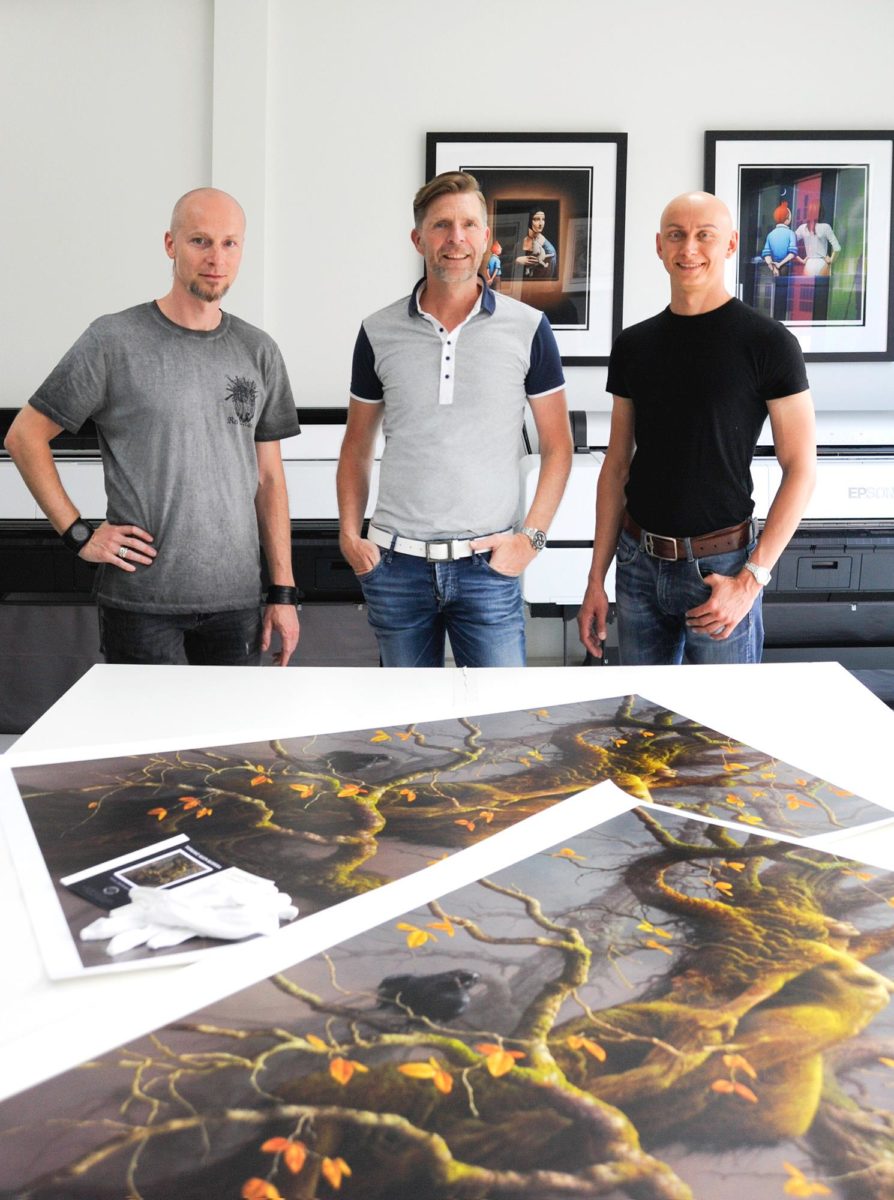
From left: Tomasz Alen Kopera, Marcel Salome, Jakub Jozefczyk
Together with Tomasz Alen Kopera I have recently visited Marcel Salome, director and owner of Re-Art Fine Art Printing & Editions, in his facility in Almere, Netherlands.
This is the place, where all our Certified Art Giclée’s are created. Re-Art is using state of the art equipment in the process. In conjunction with knowledge and experience of Marcel Salome – the master printer, the final product is always of the highest quality that has no comparison in the market.
You can find out more about our Certified Art Giclée’s by clicking here.
Jakub Jozefczyk
Agent for Tomasz Alen Kopera
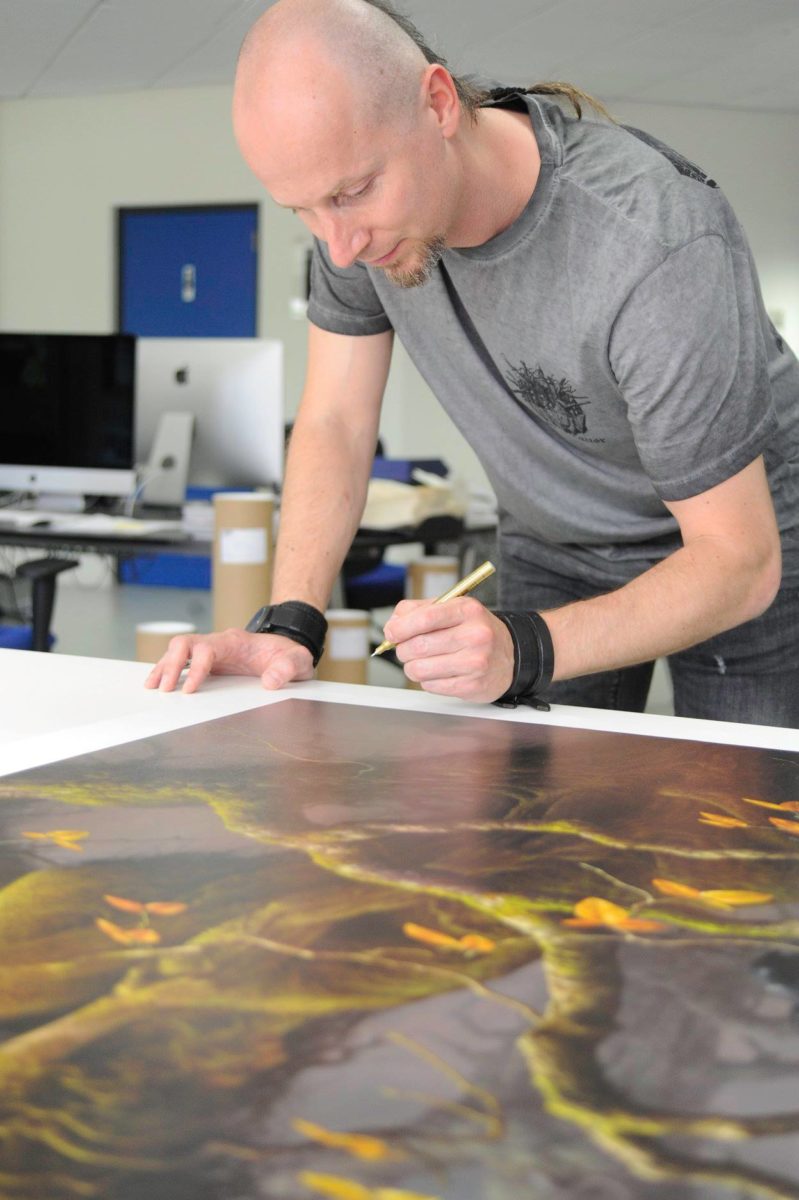
Tomasz Alen Kopera
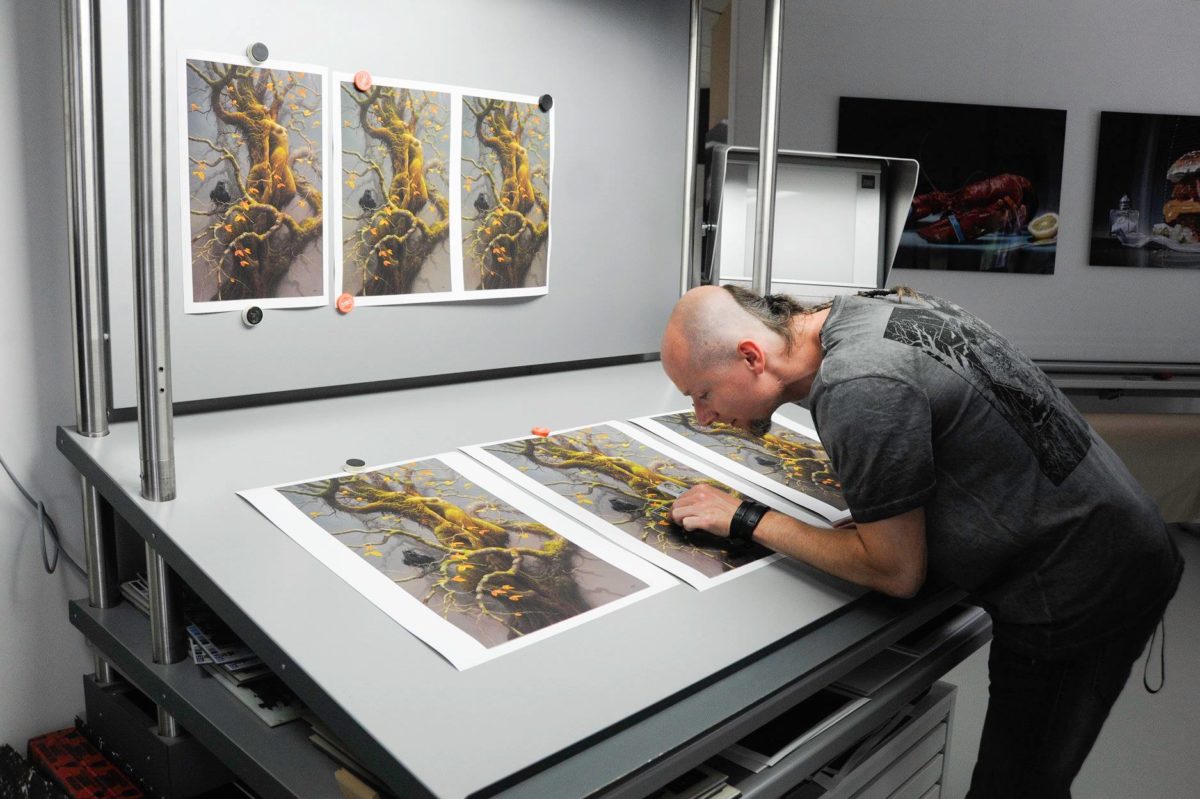
Tomasz Alen Kopera
Exhibition “Magical Dreams IV” in Wroclaw
We woould like to invite you to the exhibition “Magical Dreams IV” which will have the big opening on the 30 August 2018 in Wroclaw, Poland. We also will be there along with Tomasz Alen Kopera and one of his outstanding paintings. Great opportunity to meet the best European artists representing magical realism.
The exhibition will run until 13 October 2018.
Opening day: 30 August 2018
Galeria Miejska we Wrocławiu
ul. Kiełbaśnicza 28
50-109 Wrocław
http://galeriamiejska.pl/o-galerii/kontakt/
We hope to see you there!
Już w następny czwartek wielkie otwarcie wystawy “Magical Dreams IV” we wrocławskiej Galerii Miejskiej. To doskonała okazja, aby obejrzeć dzieła najlepszych polskich oraz zagranicznych artystów reprezentujących realizm magiczny. Wielu z nich osobiście pojawi się na otwarciu, więc będzie możliwość porozmawiania z nimi. Swoją obecnością na pewno zaszczyci nas Tomasz Alen Kopera.
Wernisaż: 30 sierpnia 2018 (czwartek), godz. 18:00
Galeria Miejska we Wrocławiu
ul. Kiełbaśnicza 28
50-109 Wrocław
http://galeriamiejska.pl/o-galerii/kontakt/
Wystawa potrwa do 13 października 2018.
Organizatorami wystawy są Galeria Miejska We Wrocławiu oraz Bator Art. Gallery.
W imieniu organizatorów serdecznie Państwa zapraszamy!
Catalogue with paintings by Tomasz Alen Kopera
For the first time ever, we are presenting you with a catalogue filled with original works of art painted by Tomasz Alen Kopera. Within these pages, you will find the largest collection and variety of his exclusive paintings created between 2010 and 2018. The book’s foreword brings you closer to the magical world of Kopera’s imagination, and the separate page with information about the artist completes the whole picture. The catalogue is bilingual – written in English and Polish language.
Specification
Softcover
47 pages
Full Color
Language: English & Polish
Dimensions: 29 x 21 cm
The catalogue is available exclusively in our gallery. You can place your order by clicking here.
Prezentujemy Państwu pierwszy w historii katalog twórczości Tomasza Alena Kopery, będący jednocześnie jedynym wydawnictwem zawierającym tak liczne zestawienie jego prac. Prezentowane w nim dzieła pochodzą z okresu 2010 – 2018. Słowo wstępne przybliża czytelnikowi magiczny świat wyobraźni Kopery, a zawarte na osobnej stronie informacje o samym artyście dopełniają całość. Katalog jest dwujęzyczny – angielsko-polski.
Specyfikacja
Miękka okładka
47 stron
Pełen kolor
Język: angielski i polski
Wymiary: 29 x 21 cm
Katalog dostępny jest wyłącznie w naszej galerii. Zamówienia można składać klikając tutaj.


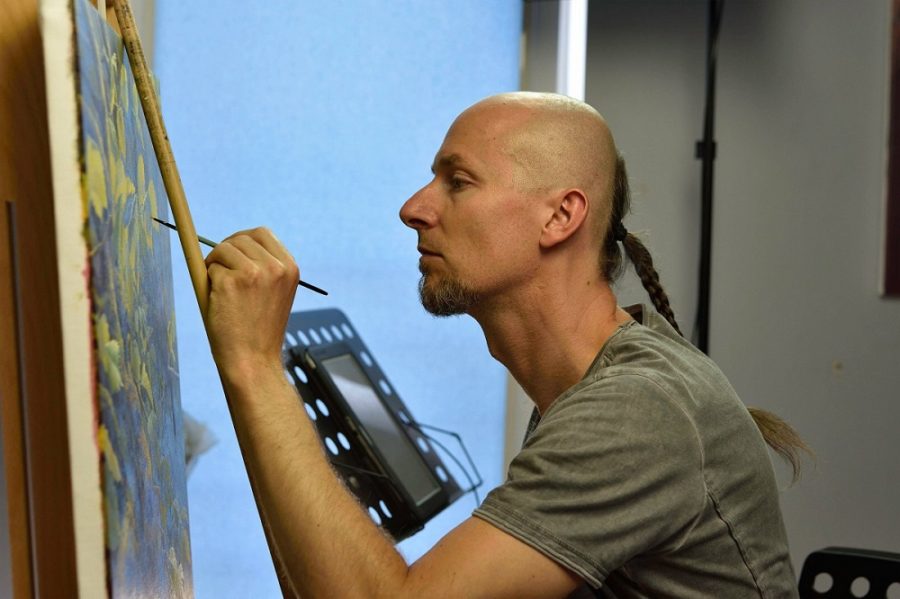
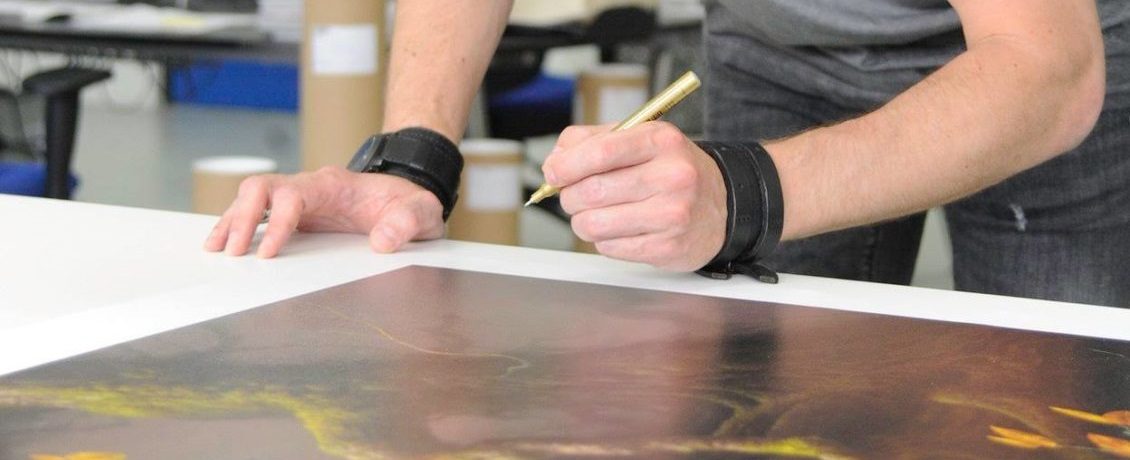
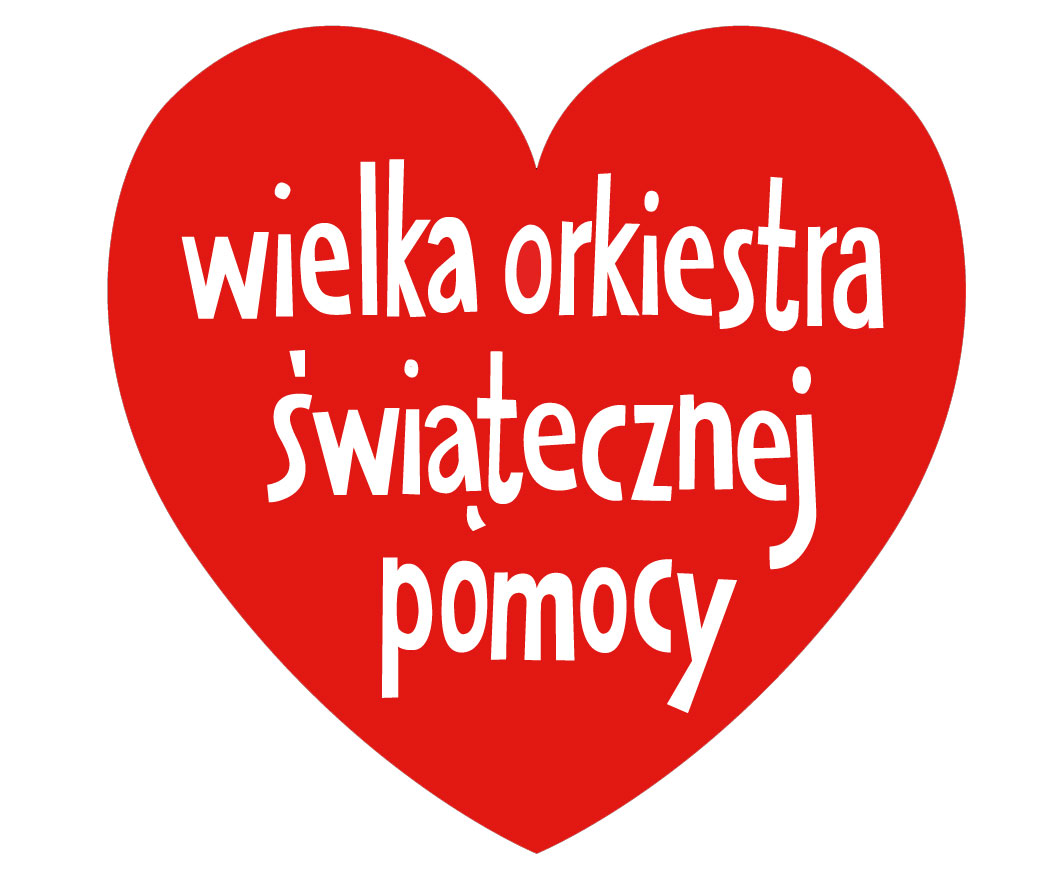
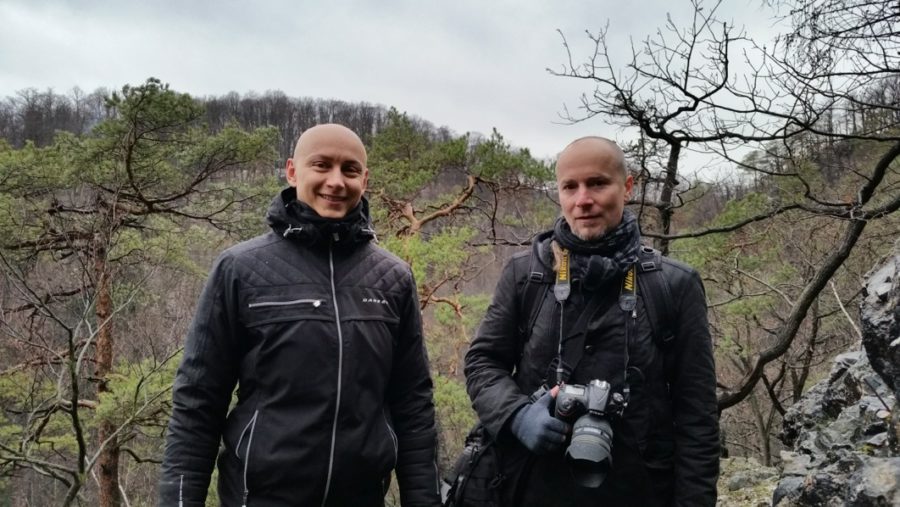
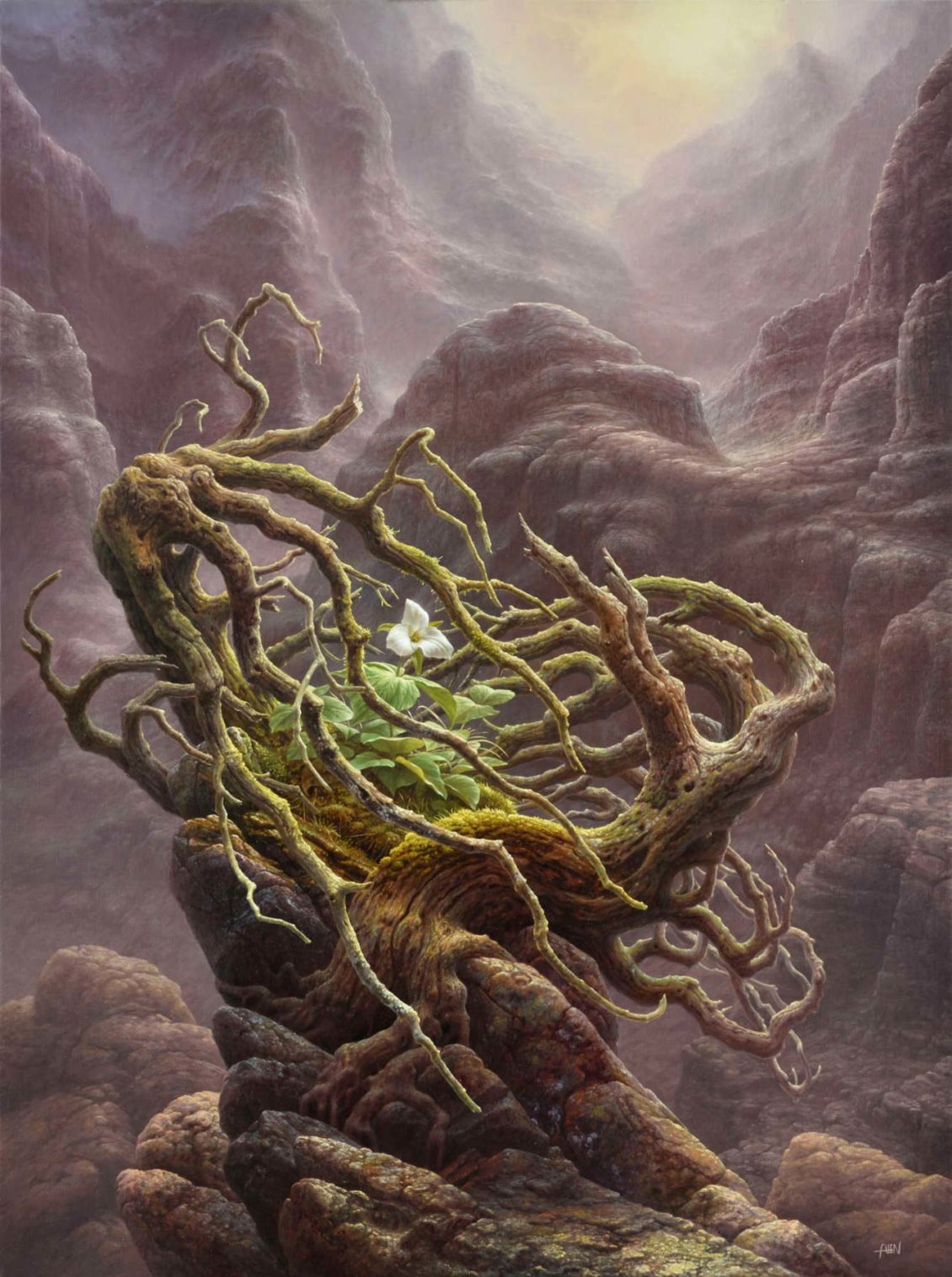

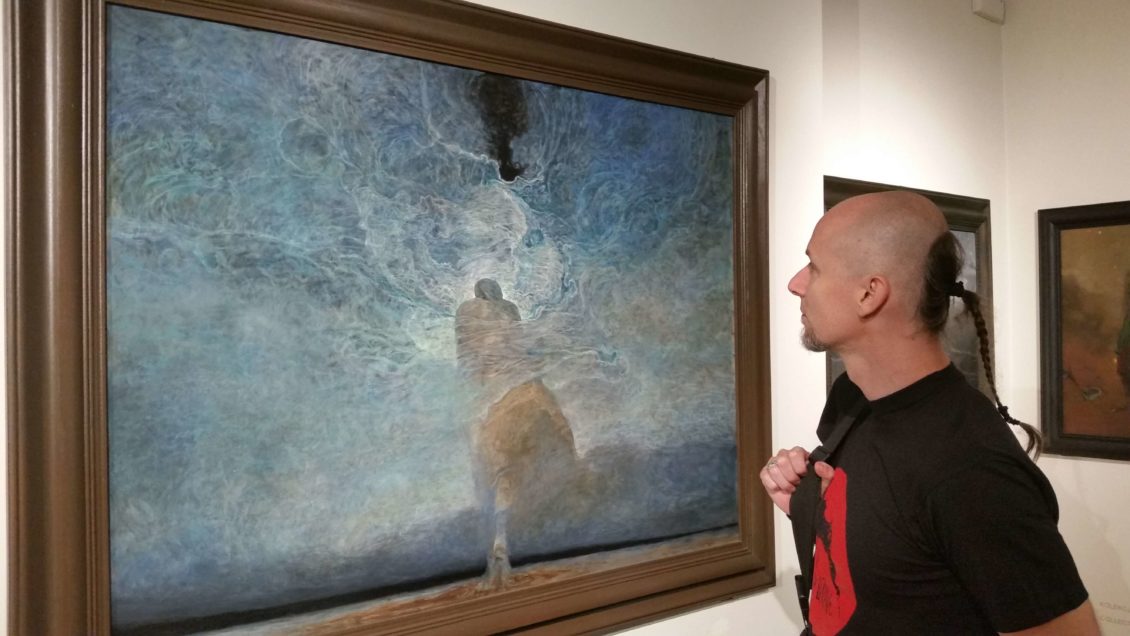
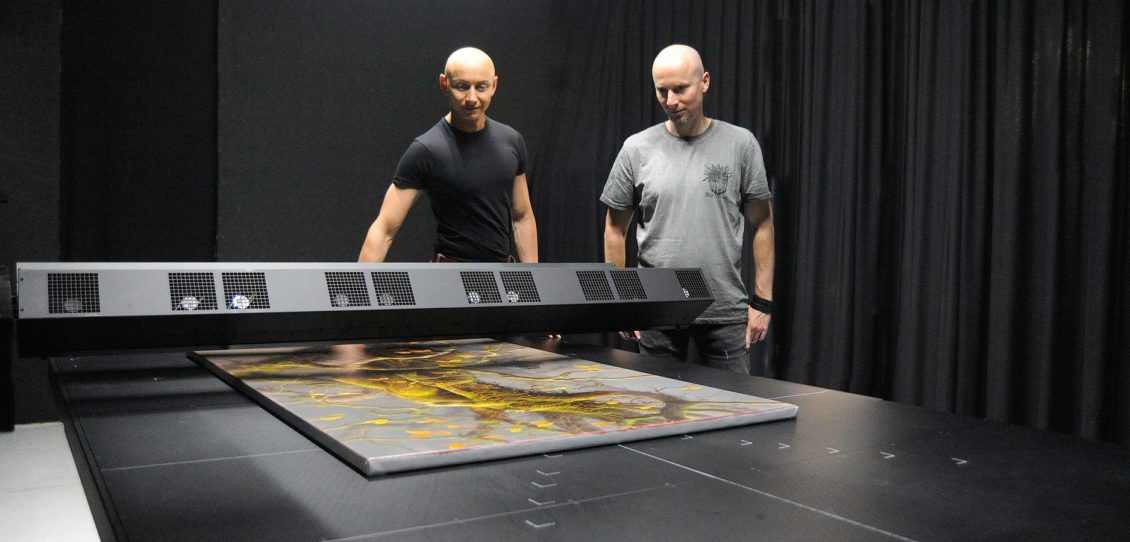
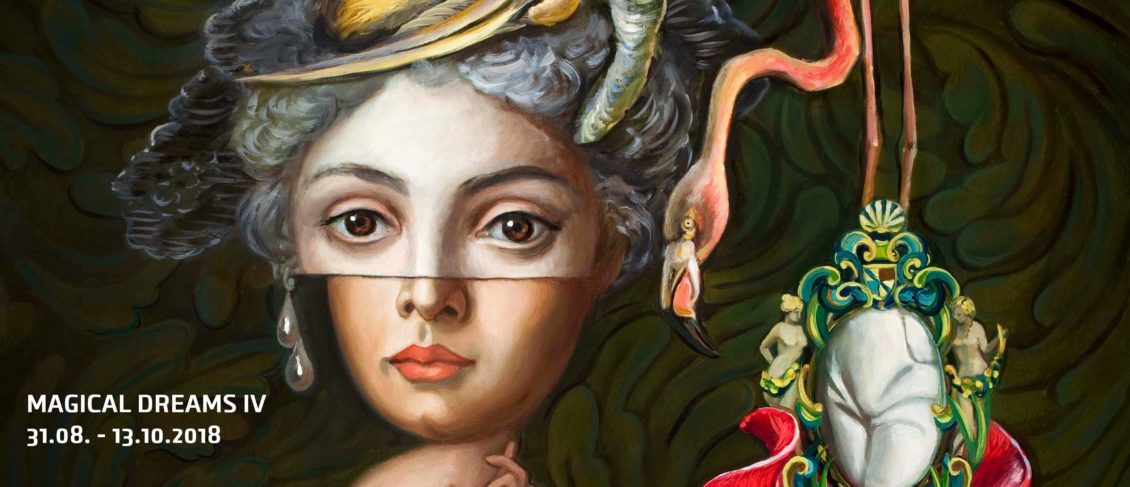
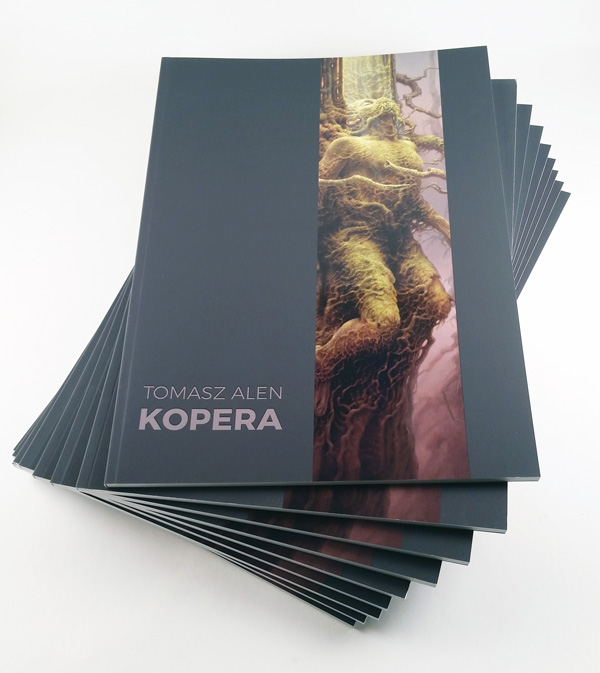
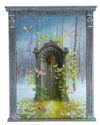 Portal XVII - Spring
Portal XVII - Spring 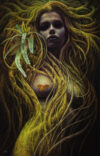 J023 (untitled)
J023 (untitled) 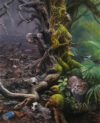 Anthropocene
Anthropocene